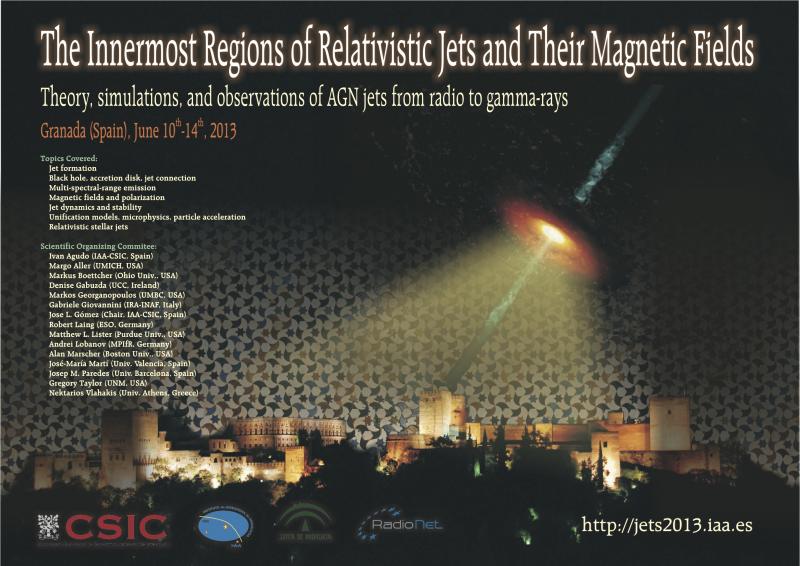The Innermost Regions of Relativistic Jets and Their Magnetic Fields. Granada (Spain). June 10th-14th, 2013.
Fernández Ontiveros, Juan Antonio
The nature of the IR emission in LLAGN at parsec scales: Does the jet dominate at low luminosities?.
Author list: J. A. Fernández-Ontiveros, M. A. Prieto, J. A. Acosta-Pulido, S. Markoff, O. González-Martín
The vast majority of AGN belong to the low-luminosity class (LLAGN): they exhibit a low radiation efficiency (L < 1042 erg/s; L/Ledd < 10-3) and the absence of the big blue bump in their spectrum, a signature of the accretion disk. The study of LLAGN is a complex task due to the contribution of the host galaxy, whose light outshines these faint nuclei. As a consequence, numerical models are usually compared with relatively poorly defined spectral energy distributions (SEDs). For a sample of six prototype nearby LLAGN, a multiwavelength dataset including radio, IR, optical/UV and X-ray measurements with a few tenths of arcsec resolution has been collected. These high-spatial resolution SEDs reveal that: i) the mid-IR bump, indicative of thermal emission from the torus, is missing in LLAGN; ii) the continuum emission of these nuclei is largely described by a self-absorbed synchrotron spectrum, suggesting that jet emission dominates the overall energy output in these objects. The optically thin radiation in the IR-to-UV range is produced in the jet launching region, very close to the central black hole. The very steep slope found in this component -with a spectral index in the 1-3 range- suggests that a large number of LLAGN are powered by young and compact jets with very high radiative losses.




